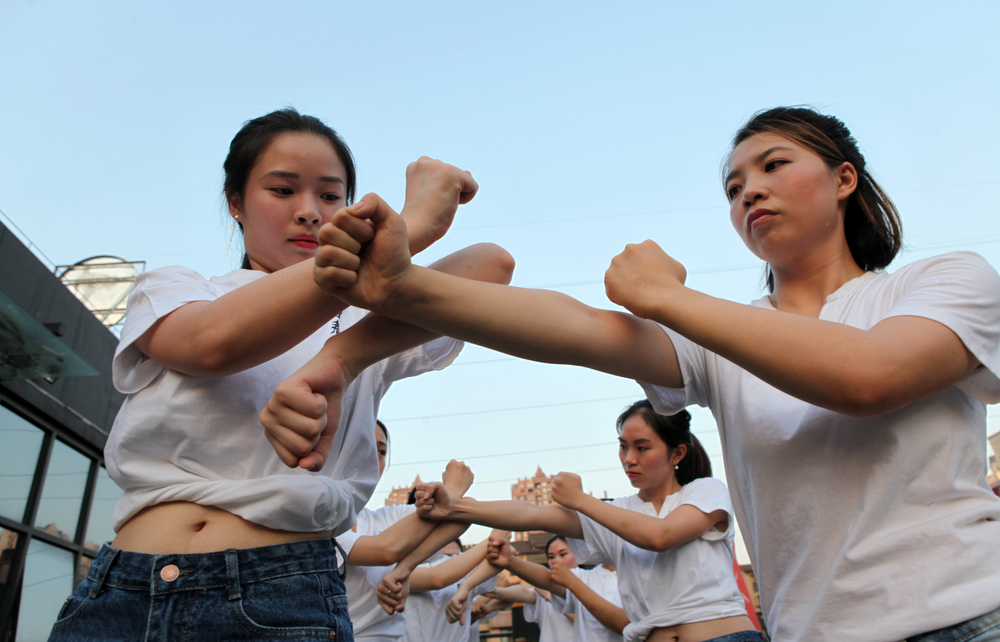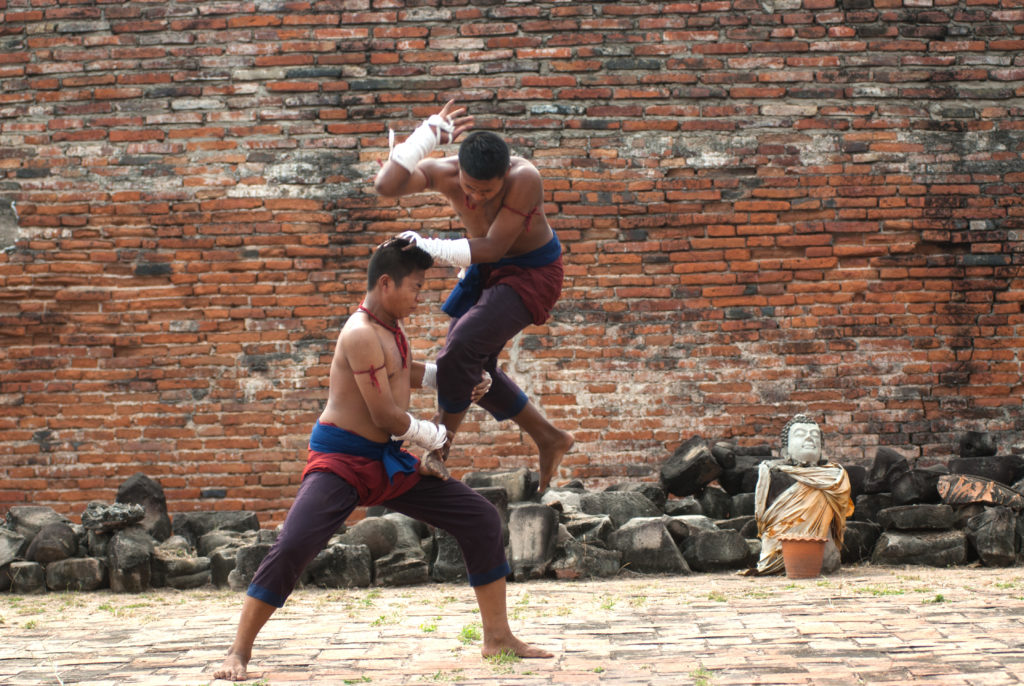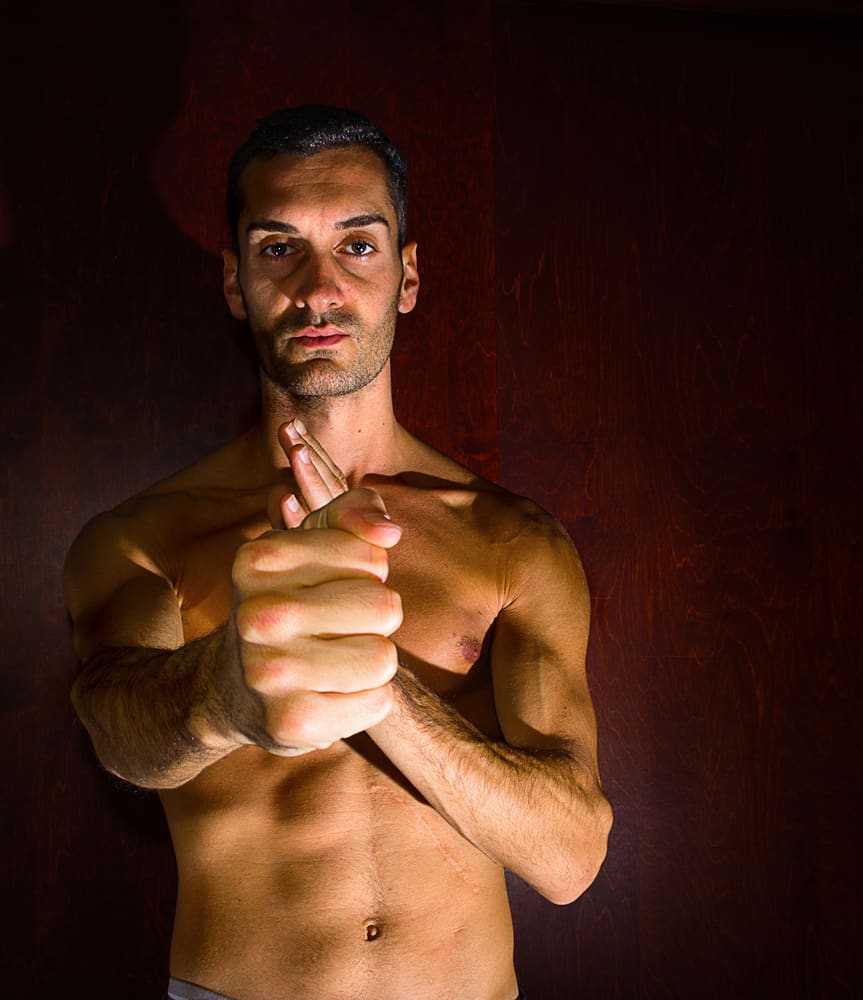When it comes to the question of ‘Muay Thai vs Wing Chun’ there are definitely arguments for both martial arts in terms of their strengths and application in the real world.
The truth is Muay Thai and Wing Chun came about from different circumstances and the styles of fighting themselves were born from the circumstances that gave birth to these two styles.
Wing Chun is said to have been developed by females and as such does not rely on strength or size but body structure and technique.
Muay Thai came from Muay Boran, an ancient unarmed fighting styles used on the battlefield but today it is a combat sport governed by rules and regulations.
Wing Chun is also a close quarter fighting style whereas muay thai prefers long punches and kicks.
Today Muay Thai is based on rules and is a combat sport that uses protective equipment such as gloves and rules such as timed rounds and weight classes.
Whereas Wing Chun is designed to be used against any sized opponent and utilizes hand trapping which is easier without gloves.
Both Muay Thai and Wing Chun are excellent striking arts and both are extremely popular around the world today with many students dedicating themselves to pursuing excellence in these martial arts styles.
But as stated the styles differ due to their original circumstances and as such they are each suited to different specific situations.
But both muay thai and wing chun can be applied to any street self defense or combat situation.
So let’s take a closer look at how these styles were born and how this has influenced their development and fighting styles.
The Origins of Wing Chun
The story of the birth of Wing Chun as explained by Grandmaster yip man is very familiar to all wing chun practitioners.
As explained by Grandmaster Yip Man, Wing Chun was developed by females.
The most influential women credited with the development of Wing Chun are the Buddhist Nun Ng Mui and her female student whom she taught the style to.
Being a Southern China style of Kung Fu, Wing Chun does not emphasize jumping and tumbling or large powerful kicks as is common in Northern styles of Kung Fu.

Wing Chun relies of Structure and Technique
As Wing Chun is said to have been developed by females who are naturally smaller and less stronger than males, the style does not rely on strength and size.
Wing Chun utilizes body structure and technique to be effective, especially against larger opponents.
Wing Chun also is not concerned with rules, protective equipment such as gloves or even weight classes as is the norm in muay thai.
Instead muay thai can use a lot of techniques that are illegal in muay thai such as strikes to the eyes, throat or even groin in order to neutralize an attacker.
Origins of Muay Thai
Muay Thai as is popular in the world today is primarily a combat sport based on rules and regulations similar to Western Boxing where a lot of influence is drawn from.
The boxing ring, timed rounds, gloves and protective equipment such as mouth and groin guards as well as weight classes all come from Western Boxing.
But the origin of muay thai lies in Muay Boran or Ancient Boxing.

This is the unarmed fighting methods used by soldiers of the Thai King in the warring period of the Siam Kingdom in frequent battles with Cambodia and neighboring Kingdoms, many hundreds of years ago.
Prior to the establishment of Western Boxing style rules and regulations, Muay Boran was foungh with rope gloves or kard cheuk with no timed rounds and only ended with a knockout or one fighter giving up.
Muay Thai VS Wing Chun Techniques
Muay Thai is primarily a striking art though the clinch or stand up grappling is a major component of muay thai.
Thai boxers who specialize in clinch and knees are known as muay khao.
They specialize in tying up their opponents in the clinch to neutralize their attacks while dominating the opponent and controlling them while pummeling them with knees to cause damage.
However muay thai is also a long range style and favors long punches and the signature roundhouse kick as well as the Thai push kick or teep to keep distance.
Wing Chun, however, is more of a close quarter style that utilizes trapping and counter striking an opponent’s attack.
Primarily a boxing or punching style, wing chun also does have kicking techniques but they are not as varied or numerous as in muay thai.
Muay Thai vs Wing Chun Stance
The most distinctive feature of Wing Chun is probably the stance and a Wing Chun fighter can be easily identified by his fighting stance.
Having both hands lower in comparison to muay thai with the lead hand extended out and the rear hand closer to the chest, the wing chun stance can be easily recognized.
The chain punch is another signature technique of wing chun.
This punching style is a straight forward relentless attack that seeks to strike the same target over and over again in a chain action moving forward.

Muay thai also has a distinct stance.
With arms raised and fists at the eyebrow level, elbows slightly flared out and the chin tucked and back slightly hunched, it is easy to identify a muay thai fighter from their stance.
The signature technique of muay thai is the Thai roundhouse kick which is recognized as one of the most powerful kicks in all martial arts that is highly technical but also brutal. This kick has been perfected in muay thai.
The Thai clinch is another signature technique of muay thai is effective for dominating an opponent with both strength and technique to wear them down, damage them with knees and elbows and tire them out.
The muay thai knees are also a signature technique of muay thai and round knees, straight knees, jumping knees have all been highly developed in muay thai to cause damage and potentially end fights.
Muay Thai vs Wing Chun – Training Methods
The primary purpose of muay thai training is to develop power and endurance. Technique and fighting strategy is hugely important. But power and a ‘strong heart’ are really important aspects of muay thai training.
Wing Chun on the other hand does not seek to develop power in the sense that muay thai does. Instead sensitivity through stick hands, technique and positioning are the primary goals of wing chun training.
Wing Chun Training Methods
Sticky hands is another unique wing chun training method that seeks to develop hand trapping and sensitivity to be able to use leverage, body positioning and body structure to trap and neutralize an attack while simultaneously striking a weak point of the opponent.

The Wooden Dummy is another very unique Wing Chun training tool and there is a specialized form with a set routine of techniques that are executed in order to develop good body positioning with the arms of and leg of the wooden dummy simulating an opponent’s arms and stance.
Muay Thai training Methods
The signature training tool in muay thai are the Thai pads which are specifically designed to develop the roundhouse kick and are held at natural positions as targets for the opponents mid section head or held low for leg kicks.
Unlike Wing Chun there are no set forms in muay thai.
A thai fighter has much more freedom to practice techniques while shadow boxing or even using the heavy bag to develop power.

Sparring is another huge part of muay thai training.
However sparring in muay thai is more relaxed than in say Boxing, Kickboxing or even MMA.
It more about ‘playing’ trying out techniques and practicing all that you have drilled in a safer manner.
Clinch sparring is another unique part of muay thai training that is done regularly. It is done without gloves and with less power and more focus on technique.
Clinch sparring is a gruelling part of muay thai training that also developed good endurance as well as excellent cling techniques and tactics.
If you are interested it is also possible to begin learning Wing Chun from home also.
Muay Thai vs Wing Chun – Wrap Up
The differences in technique and fighting style between Muay Thai vs Wing Chun largely came about from their origins and development.
Wing Chun is said to have been developed by females and as such relies less on strength and power and more on technique, body positioning and body structure.
Muay Thai developed from ancient battlefield styles but has been largely influenced by Western Boxing rules and regulations to develop into the popular combat sport that the world knows today.
The training methods between the two styles also differ greatly as muay thai seeks to develop power and endurance through hard training which is done twice per day, 6 day per week for pro fighters.
Wing Chun is more focused on training technique, positioning and sensitivity through tools such as sticky hands and the Wooden Dummy.
However both styles are excellent martial arts to learn for health, fitness as well as self defense.



